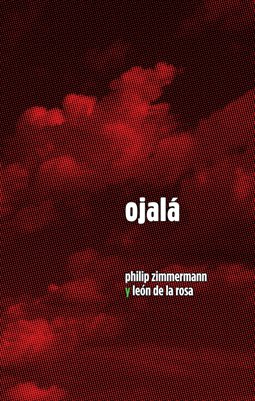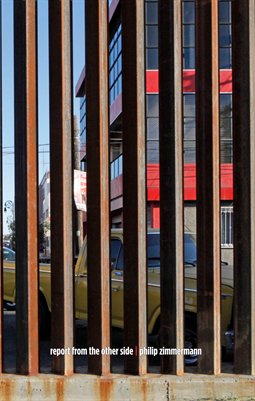Since the University of Arizona is famous for it's Center for Creative Photography, it's artists' book collection in our Special Collections Library, plus our nationally-known Poetry Center, we thought that the theme for the CBAA meeting should be the photographic artists' book, have shows in all of the above, plus I would curate a show at the School of Art's Joseph Gross Gallery.
I wanted to put together a show that would expose the CBAA members to the huge variety of artists' books that use photographs. Of course many of the members know the classics like Ed Ruscha, but there are so many more that are not on their radar. Clif Meador and I have had many talks about why this is, and we have conjectured that it is partially becasue many of the members are letterpress people and letterpress is not that great a medium for photographic images. On the other side of the coin, I wanted to show the photographic community here in Tucson that there is a huge world of photographic artists' books that go beyond Ed Ruscha or Paul Graham.
This (above) is the mailing postcard.
The show that I curated ended up being a huge effort, primarily because I had thought that we had book vitrines to show bookwork in. It turned out that the University Museum of Art used to have cases, but due to their deteriorated condition and lack of storage space, they had been thrown out. The main library had book cases, of course, but they were in use. They might have been able to lend me one, but that would not have sufficed. I had hoped to mount a very large, inclusive, show that could act as an overview of photographic artists' books from the late sixties on, and one case would not have been nearly enough. I wanted to concentrate on books that were truly 'artists' books' and not just photobooks and traditional monographs, assemblies of single images.
I realized that I would probably have to build simple secure cases for the books in the show. I could not afford to have the books just open on sheets of unsecured plywood since many of the books were very valuable and there was a high risk of having books taken from the gallery. The gallery has one student monitor but that person sits at a desk far above the gallery itself and cannot be a guard for small objects below in the gallery space. A number of books like Francesca Woodman's only artist's book, Ed Ruscha's Twentysix Gasoline Stations and others from artists like John Baldessari, Marcel Broodthaers, and Keith Smith, were far too valuable and irreplaceable to risk theft. I came up with a construction plan for ten cases for about $4,000 and that would be just for the materials.
But that would also mean that we would have to do the construction ourselves, plus raise that money since it was not in the CBAA budget. In the end I was able to raise enough money for eight cases, instead of the ten. The Director of the School of Art, Colin Blakely, and the Dean of the College of Fine Art, Andy Schulz, gave us $1500 and the CBAA Board agreed to give us a little over $1600 to allow us to purchase the materials. I was able to get an incredible price on the cast acrylic plexi by ordering directly from a manufacturer in New Jersey and having them trucked here.
I was most fortunate to have a Creative Writing grad student, Will Stanier, help me move the lumber and 1/4" plexi to the gallery, and two other fantastic people, Lisa Watanabe and Brett Starr, actually help with the assembly of the vitrine cases and the support legs. I never would have made the deadlines for installation without Brett and I am especially grateful to him.
Because the plexi tops were fixed on the case tops, there was no way that visitors could handle the books. Because of both wear-and-tear, as well as security, this was necessary. Of course this is a terrible way to experience books, to see only one two-page spread of each book, and not be able to turn pages and see the books as the time-based art that they are. So early on, I had decided that I would also have to have videos, as many as possible, so that visitors could at least see the way the book pages turned and how the images and text were sequenced.
I talked to Brooke Grucella, the always-helpful director of the Joseph Gross Gallery, and she said that the gallery had some monitors that did not need a video or DVD player. All one had to do was put the looped videos on a flash memory stick and they could be inserted in the back of these LCD monitors and that would be all that was needed.
The hundreds of case labels for the books was another huge hurdle to overcome, and I was very lucky to have the help of both Maria Lee and Brett Starr in a marathon label-typing party we had one Saturday.
I ended up making 123 videos of books with the pages being turned from start to finish. About half were books from the show that I especially felt should be experienced by seeing a person turning the pages, and the other half were books that for some reason (lack of space, too large etc.) were not in the vitrines. I had over three hundred books in the vitrine cases and I had wanted to make videos of all of them, but it was just too much. I do think that this worked out overall though.
Here are some installation shots of the show:
I think that the show was a success. It was a little odd admitting that all of the books were from my own collection, but I have a very large one, and I think I had a really good representative selection that showed the different strains of photographic books in those fifty years. Although I did have a few books that preceded the 1968 date, the first book I bought that was in the show, Andy Warhol's Index Book (196), I actually did buy when I was in high school in 1968. Thanks to Harry Reese for making some suggestions, years ago, about titles that should go into a show that covered this time period. That was very helpful.
If you are interested in the checklist from the show, both books that are in the cases and on the monitors, please write me at




















